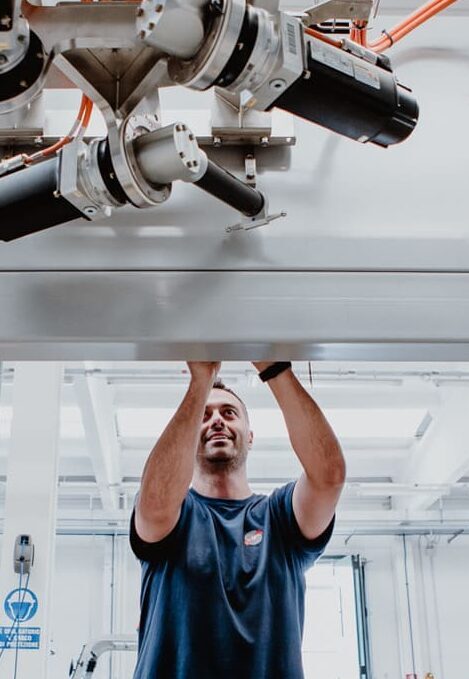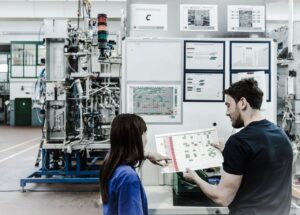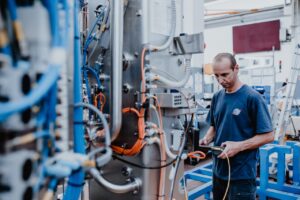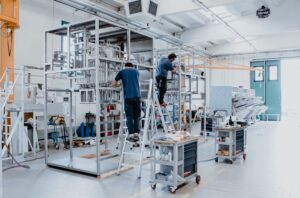What is food packaging
What does food packaging mean?
Food packaging is the process of food wrapping.
Apparently, it is a simple process. Actually, talking about food packaging means venturing into a jungle of situations and cases that can be very wide and different from each other.
So, let’s try to clarify a little bit, starting from a definition that we find in Article 218 of the Environmental Code (Legislative Decree April 3rd ,2006):
Packaging means the product, composed of materials of any nature, used to contain specific goods, from raw materials to finished products, to protect them, to allow their manipulation and their delivery from the producer to the consumer or user, to ensure their presentation, as well as disposable items used for the same purpose.
Food packaging can also be called packing or food packing. We always refer to the same process.

Primary, secondary and tertiary food packaging
Packaging, or food packaging, divides into three main sub-categories:
- sales food packaging or primary packaging, i.e.packaging designed to constitute, at the sale point, a sales unit for the final user or for the consumer;
- multiple or secondary food packaging, which is designed to constitute, at the sale point, the grouping of a certain number of sales units, regardless of whether it is sold as such to the final user or the consumer, or whether it serves only to facilitate shelves replenishment at the sale point. It can be removed from the product without altering its features;
- transport food packaging or tertiary packaging: packaging designed to facilitate goods handling and transport, from raw materials to finished products, of a certain number of sales units or multiple packaging to avoid their manipulation and transport damages, excluding containers for road, rail, sea and air transport.
Obviously, when we talk about food products, the packaging must follow precise hygienic standards, to ensure products safety and cleanliness. In this sense, full compliance with regulations and the use of high-performance materials is crucial.
It is obvious that to preserve food, its packaging must be made with specific, non-toxic materials, able to minimize product deterioration even in adverse environmental conditions and not release toxic or harmful substances. The most popular packaging materials are metal, glass, paper and cardboard, followed by various plastic materials. Food companies, from multinationals to small and medium-sized ones, use sophisticated and technological packaging machines to pack the product, making the process safe, cheap and fast and consequently increasing the factory efficiency.
Features of food packaging machines
Machines for food products packaging can be remarkably different in shape, in size and in the kind of packaging to be followed. On the other hand, what is fundamental and must never be missing for a food packaging machine concerns the high hygienic standard.
To identify the ideal machinery for your food products packaging, it is necessary to make a careful analysis of machines features and functions, starting from some fundamental elements:
- first of all, you need to evaluate the kind of product to be packed, the kind of conservation of the product as well as its quality standard maintenance guarantee; you should have a precise idea of the type of packaging to be made and, finally, carefully consider the time / quality ratio.
- One further element to evaluate is machine versatility and flexibility, so that the investment can be long-lasting over time and can follow the changes of the product to be placed on the market.
Some numbers
According to Ucima, the national trade association that represents, supports and assists the Italian packing and packaging machinery manufacturers, the Italian packaging industry is a world leader, with an international market share of around 26,5%; a level that resembles Germany, the other major manufacturing country.
The sector turnover in 2020, which exceeded pre-crisis levels, stood at 4.3 billion euros. The main market is the European Union. In second place, Asia, followed by extra-EU European countries, Central, South and North America.
With reference to countries, China is the first export market, followed by the United States and France. Last analyses show positive trends: the sector of automatic packing machines ends the first half of 2021 with a + 21% compared to the same period of the previous year. Exports grows (+ 19.3%), while the domestic market records a + 31.2%.
The added value of CMS for food packaging
CMS Spa has been operating in mechanical constructions for third parties since 1975. In all these years, the company has developed and achieved a high degree of technical skills that allow it to face both national and international market by collaborating with leading customers, also in food packaging.
CMS can offer its customers a complete cycle, from co-design to mechanical machining, assembly and testing of the complete machine, with a high degree of innovation. CMS pays much attention to the qualitative aspects of process and product and, in particular, to all the parts of the machine that are in contact with the packaging material and to those in contact with food that pass through the machines.
What does FCM mean?
A food packaging machine is composed of many parts, each of them realized through several technological raw materials, according to their specific purpose. The parts that handle food packaging must ensure to respect its surfaces, essential for food protection. On the other hand, the parts that may touch food must comply with the same requirements as for food packaging. In fact, they are Food Contact Material (FCM) and they are submitted to relevant legislation and technical standards.
CMS Spa is the ideal partner to support the customer in all its different needs relating to food packaging machines, as it is structured to:
– Ensure raw materials procurement and management as well as the execution of surface treatments as required.
– Perform materials processing according to the customer’s drawing and respecting strict internal GMP (Good Manufacturing Practices), developed for the specific sector.
– Ensure batch or single serial items traceability, as long as required by the customer’s needs.
– Correlate traceability to documentation, such as certifications, measurements and declarations of conformity, as agreed with the customer.
Those listed above, and other capabilities of C.M.S. Spa, are the result of many years of experience in the sector. Expertise and skills, structured in a solid Management System for Quality and Food Safety. System compliant with both ISO 9001: 2015 and ISO 22000: 2018 and regularly certified by first-class third-party entities.








